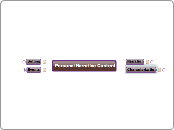Personal Narrative Content
Narration
Narration can also be called exposition. This is any background information that a wrtier provides about characters, setting or events. In a personal narrative, exposition can be very important.
Tone
Tone is the attitude you have toward the background information of your narrative. The words you choose and the way you use them will help your reader understand your tone.
Comparison
One imaginative way of describing a one thing is by comparing it to some other thingSimile - Character is like ...Metaphor - Character is ...
Senses
Since we understand everything around us using our five sensesSightTasteTouchSmellSoundIt is a good idea to describe background information using as many of these senses as possible.
Characterization
Characters (or people) are an important part of any story. In a personal narrative, characters are actual people including yourself! It's important that you describe these characters'Physical appearancePersonalitiesIntelligenceEmotionsso that the reader can understand why they behave the way they do.
Tone
Tone is the attitude you have toward the characters of your narrative. The words you choose and the way you use them will help your reader understand your tone.
Comparison
One imaginative way of describing a character is by comparing him or her with some other thingSimile - Character is like ...Metaphor - Character is ...
Senses
Since we understand everything around us using our five sensesSightTasteTouchSmellSoundIt is a good idea to describe a character using as many of these senses as possible.
Setting
The setting is the physical spaces or locations your narrative takes place in. Setting can be an important part of a story since it, "may have an effect on the events of the plot, reveal character, or create a certain mood. (ARTSEdge)
Tone
Tone is the attitude you have toward the setting of your narrative. The words you choose and the way you use them will help your reader understand your tone.
Comparison
One imaginative way of describing a setting is by comparing it with some other thingSimile - setting is like ...Metaphor - setting is ...
Senses
Since we understand everything around us using our five sensesSightTasteTouchSmellSoundIt is a good idea to describe the setting using as many of these senses as possible.
Events
The sequence of events in your narrative is called a plot. You might think of plotted events in the following way.Event #1 _____ leads to ...Event #2 _____ which leads to...Event #3 _____
Tone
Tone is the attitude you have toward the events in your narrative. The words you choose and the way you use them will help your reader understand your tone.
Comparison
One imaginative way of describing an event is by comparing it with some other thingSimile - event is like ...Metaphor - event is ...
Senses
Since we understand everything around us using our five sensesSightTasteTouchSmellSoundIt is a good idea to describe the events using as many of these senses as possible.
